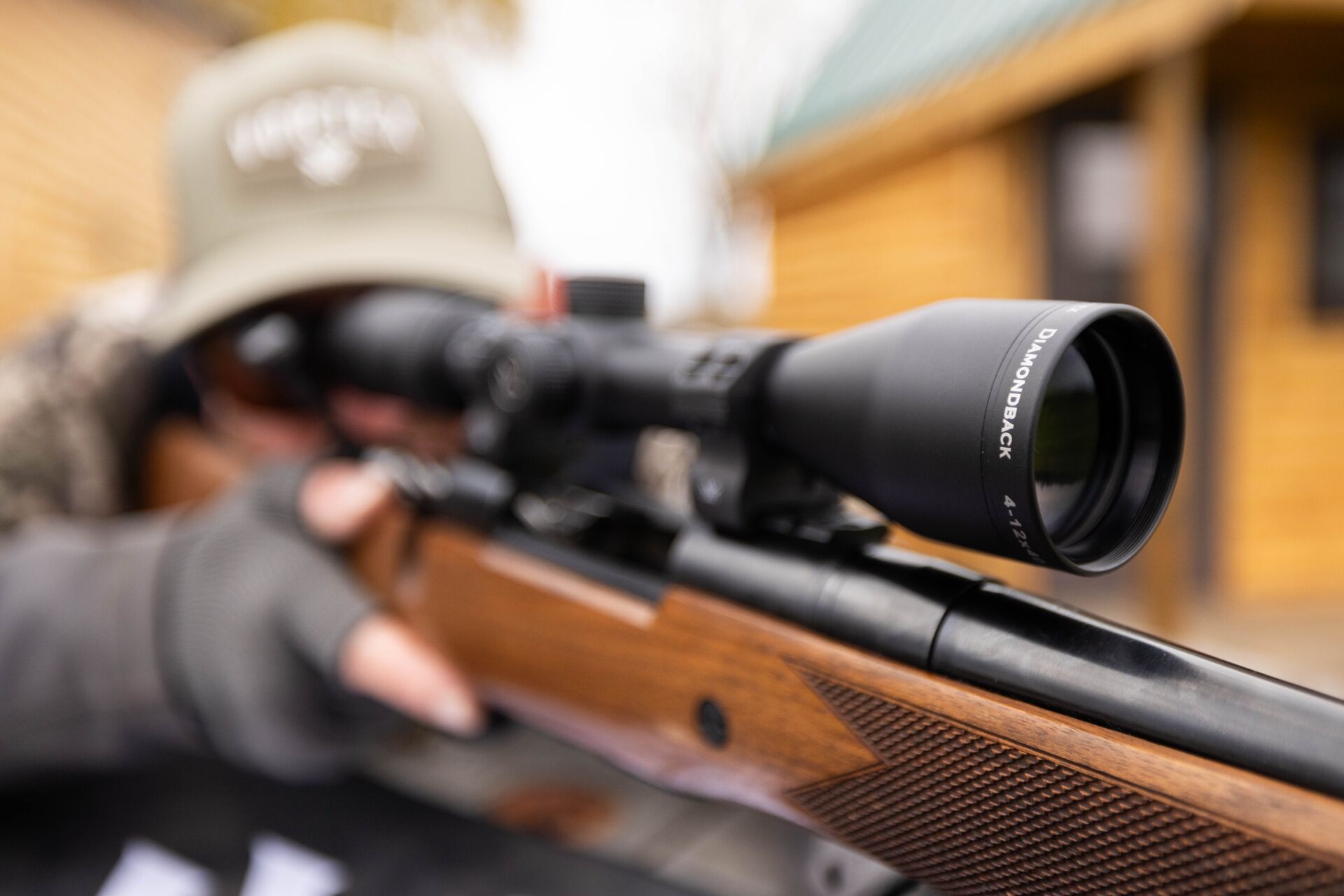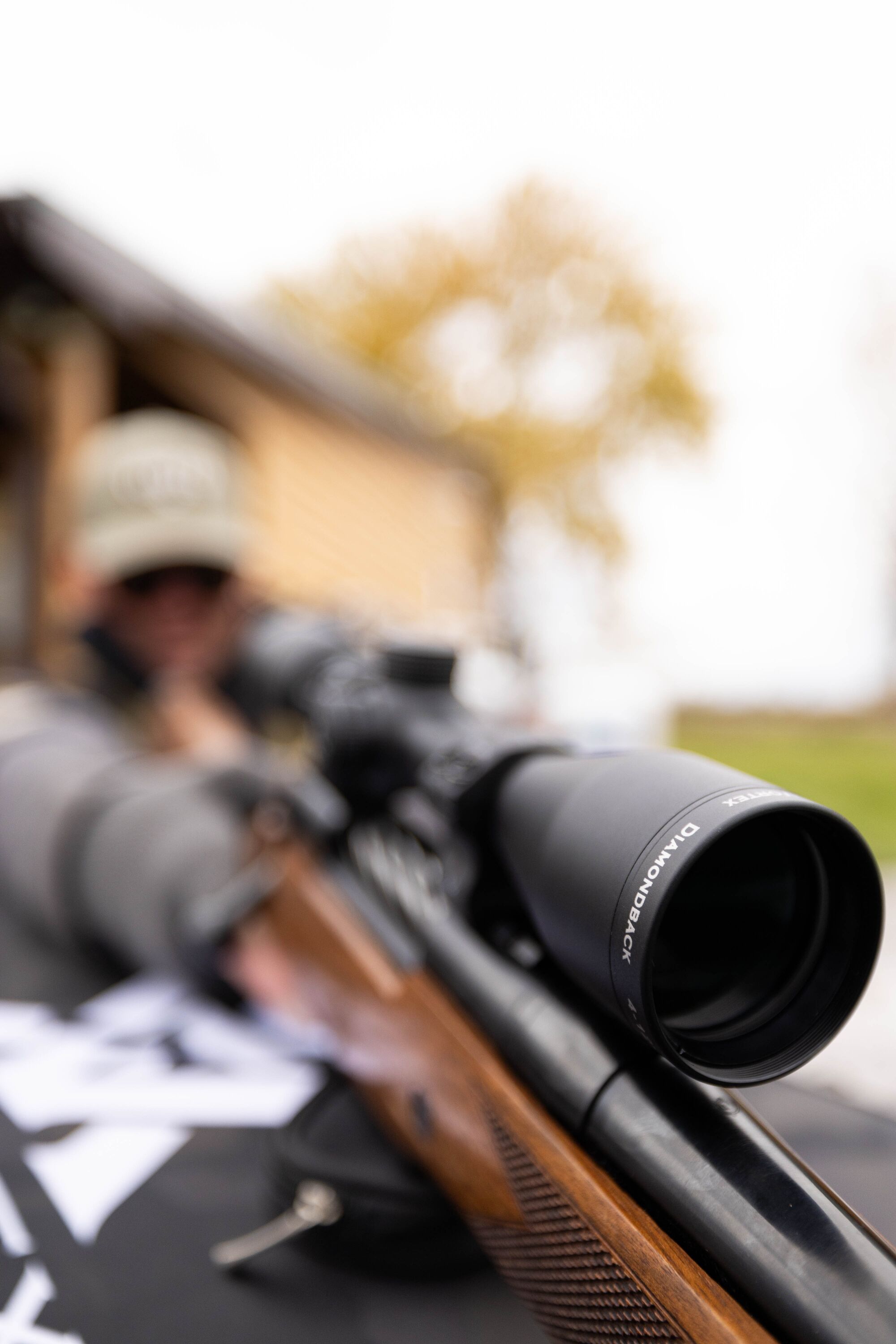How (and Why) to Improve Your Shooting for Accuracy

Shooting for accuracy, often under pressure and in less-than-ideal conditions, is a hunter's ultimate moment of truth. By the time you're ready to pull the trigger, you've already invested countless hours and dollars preparing for this hunt.
When you get that split second to put your sight on an animal and pull the trigger, are you confident you can make that accurate and ethical shot?
Whether you're hunting waterfowl in dense creek bottoms, pursuing elk in mountainous terrain, or calling in bucks from your perfect tree stand, your shooting accuracy means the difference between a successful hunt or a long walk back to your truck.
Here's why shooting for accuracy is so important when hunting (and how to get better at it)!

Why Accuracy Matters in Hunting
Every time you aim your weapon at an animal and press the trigger, you're making a conscious decision to take a life. The skill to precisely hit what you're aiming at minimizes suffering and helps ensure a clean harvest.
Above all, you honor the creature that will provide you and your family with clean and healthy food.
As a hunter, you are morally obligated to make each shot count. Wounding and not recovering animals causes unnecessary suffering and wastes resources. Leaving wounded game in the field contributes to the negative stereotypes of hunters that we're trying to combat every day.
Shooting accuracy also affects the health of your bank account. Take a few moments to add up your equipment, ammunition, clothing, and licensing costs. Those expenses are attached to each round you fire at an animal. Make them count.
Most importantly, accuracy matters because you know precisely where your round will impact. This reduces the chances of accidents and creates a safer experience for everyone in the field.

5 Key Techniques to Improve Shooting Accuracy
Like any skill-based activity, improving your shooting accuracy will take time and commitment. Here are five core strategies to dramatically improve your accuracy and precision in the field.
1. Regular Practice is the Foundation of Shooting Accuracy
Accuracy is a perishable skill. You need frequent practice sessions at various distances and angles and even in different shooting positions that mimic your expected hunting conditions.
2. Know Your Quarry's Anatomy
Ethical and practical shot placement requires hitting the animals' central nervous system, heart, or lungs. Know where these locations are on the animal.
You'll have to hit those areas consistently from different angles, especially when the animal presents a broadside, head-on, or quartering target.
Practice on photo-realistic or 3-D targets so you are comfortable picking a specific spot that is not a clearly defined black dot like those found on bullseye targets at the range.
3. Master Trigger Control
A perfect trigger press does not move the firearm. Check your trigger control by dry practicing with an unloaded weapon. Notice if your front sight, bead, or optic reticle moves when you press the trigger.
Dry practice is the best way to improve trigger control and build the correct muscle memory when you're not anticipating recoil.
4. Conscious Breathing
Proper breath control minimizes movement and creates stability that improves accuracy. Find a rhythm that works for you and the shooting you're doing.
For example, coordinating your breath with the trigger press is more critical with long-range rifles and archery than wing shooting.
A good starting point is to take two slow, deep breaths, inhaling through your nose and slowly exhaling through your mouth. After the third inhale, exhale halfway and take the shot at your natural pause point.
5. Build a Stable Shooting Position
The enemy of accuracy is the shooter's movement. Learn to create a stable shooting platform from standing, kneeling, and prone positions, and practice shooting from natural rests like trees, rocks, and the ground.
Also, experiment using walking sticks (or shooting sticks) and backpacks instead of a bipod and see how each affects establishing proper sight alignment.

Equipment Considerations
Quality optics and optic mounts are critical for accurate shooting for rifle and some shotgun hunters.
Invest in the best scopes and red dots that you can afford. If you can, follow the maxim, "Buy once, cry once." There is nothing more frustrating than shooting and missing an animal because your optic could not maintain zero.
While you can get away with cheap cartridges for practicing marksmanship fundamentals, you should buy the ammunition that works best with your rifle or shotgun. Shooting at distances over 100 yards will quickly reveal cartridge inconsistencies that create unacceptable performance.
Test different loads, bullet weights, and brands to see what works best with your weapon, and take notes on each round's performance to identify the best round to use from season to season.
Additionally, take care of your equipment with a regular maintenance and cleaning schedule. Always ensure the bore is clean and debris-free and that moving components are properly lubricated.
Also, check the torque settings of your weapon's optic mounts and action. These bolts tend to loosen over time, introducing small positioning shifts that can dramatically decrease accuracy.
Training for Success
There is no single magic practice technique for shooting. Improving your accuracy requires using a palette of tactics to make you a well-rounded marksman.
There's a reason most competition shooters spend more time in dry fire practice than they do at the range. Dry fire practice is ideal for mastering trigger control without the anticipatory flinch from recoil. You can also safely practice various shooting positions and perfect your shot process.
Once you're ready to take your practice to the range, remember to be patient. Start at closer distances and identify what you're doing that might be causing inconsistent groups.
As your groups get tighter, gradually extend your range until you shoot at your expected hunting distance. Then, keep moving farther out to build your confidence.

The Mental Game
Shooting accurately is as much a mental game as a physical one.
Learning to calm your mind and make the best call on when to shoot or not shoot is a learned skill. Experiencing buck fever during a hunt is a natural phenomenon. High-pressure situations create adrenaline dumps in your body, leading to shakiness and the inability to think clearly.
While there is no substitute for the stress of a real hunting situation, practicing shooting with other people watching you and with a timer will induce stress and performance anxiety that you can learn to desensitize yourself to.
Track Your Progress
Measuring your progress takes the guesswork out of practice. Keep a detailed practice log and track each practice session to include equipment, distances, positions, impact grouping, ammunition used, and weather conditions. Try to figure out why each miss happened and what you must do to correct it.
In time, you'll see patterns and identify areas that consistently need improvement. To see the most improvement, make those areas the focus of your next training session.

Shooting for Accuracy Improves Your Hunting Safety and Success
The journey to becoming an accurate shooter is one that never ends. The ability to consistently place rounds where you want them to go is the hallmark of a skilled hunter.
As with all journeys, the most effective way to navigate the path is through education. Enrolling in hunter education courses, like the state-specific courses offered by us here at ilearntohunt, can improve your shooting fundamentals and help you become a more well-rounded hunter in conservation, first aid, field skills, and safety.
Plus, learning through one of our online courses is a fun, gamified experience that helps you stay safe in the field. So, get out and practice to improve your shooting for accuracy, and choose the course for your state to improve your safety when hunting!




